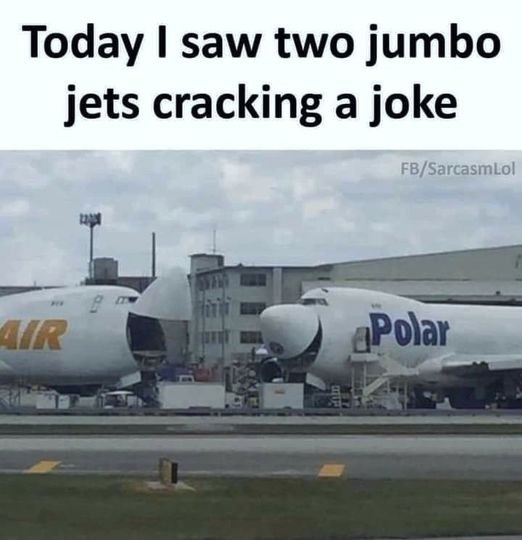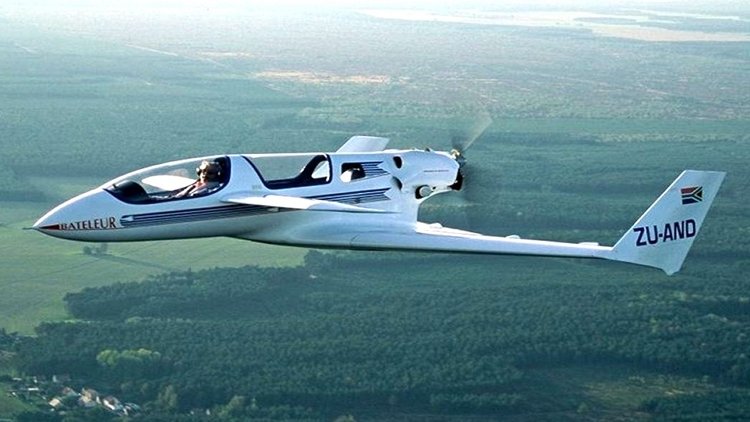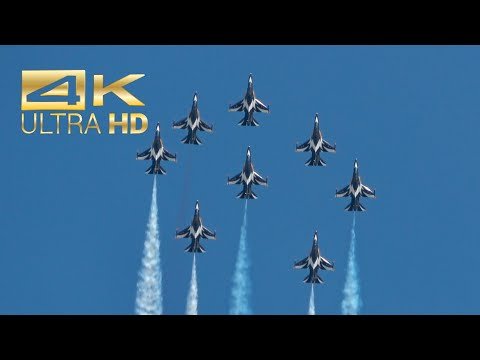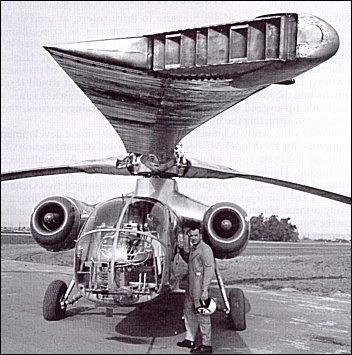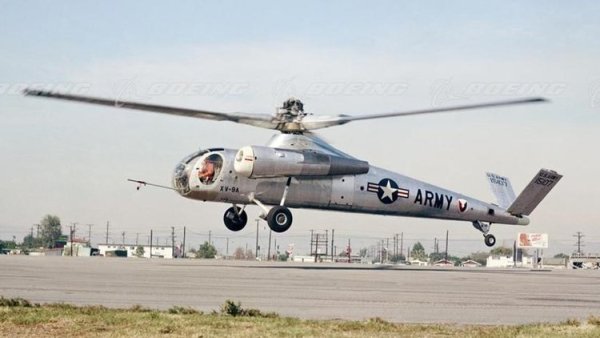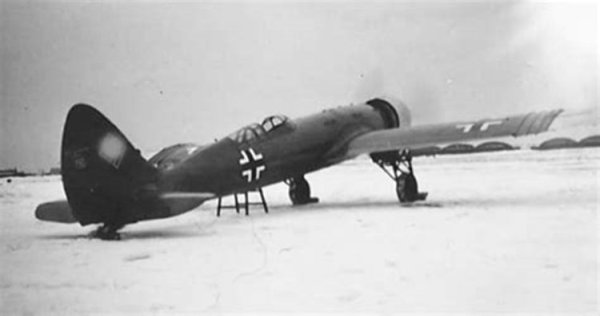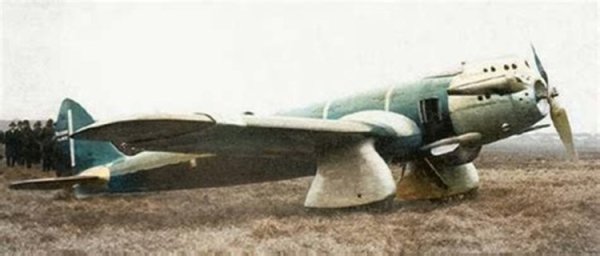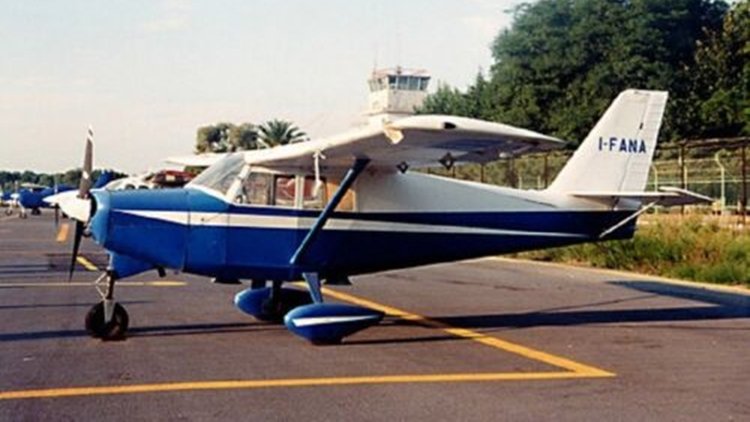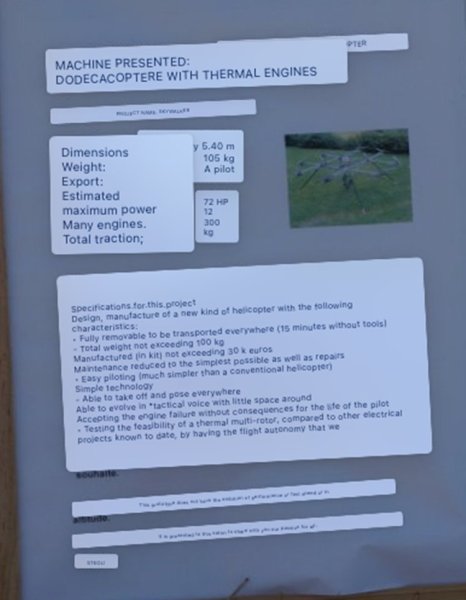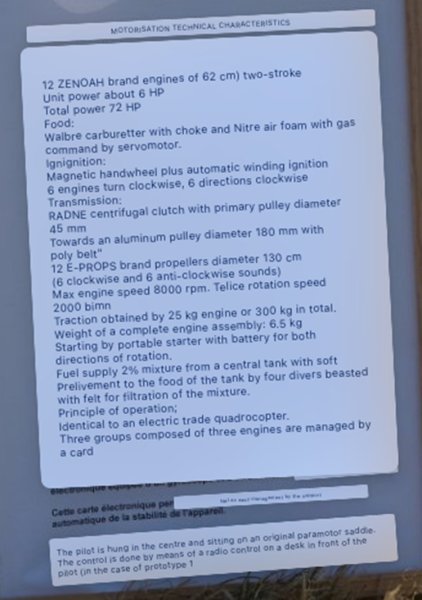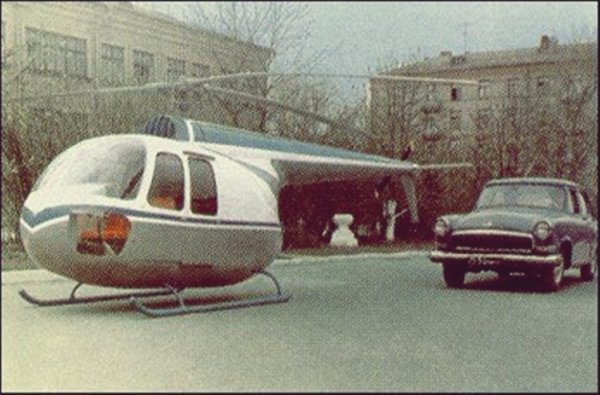-
Posts
7,561 -
Joined
-
Last visited
-
Days Won
67
Content Type
Profiles
Forums
Gallery
Downloads
Blogs
Events
Store
Aircraft
Resources
Tutorials
Articles
Classifieds
Movies
Books
Community Map
Quizzes
Videos Directory
Everything posted by red750
-
The Fairchild C-119 Flying Boxcar (Navy and Marine Corps designation R4Q) is an American military transport aircraft developed from the World War II-era Fairchild C-82 Packet, designed to carry cargo, personnel, litter patients, and mechanized equipment, and to drop cargo and troops by parachute. The first C-119 made its initial flight in November 1947, and by the time production ceased in 1955, 1,183 had been built. The Air Force C-119 and Navy R4Q was initially a redesign of the earlier C-82 Packet, built between 1945 and 1948. The Packet had provided limited service to the Air Force's Tactical Air Command and Military Air Transport Service before its design was found to have several serious problems. Though it continued in service until replaced, all of these were addressed in the C-119, which had its first test flight already in 1947. To improve pilot visibility, enlarge the cargo area, and streamline aerodynamics, the C-119 cockpit was moved forward to fit flush with the nose, rather than over the cargo compartment. The correspondingly longer fuselage resulted in more usable cargo space and larger loads than the C-82 could accommodate. The C-119 also got new engines, with 60% more power, four-bladed props to three, and a wider and stronger airframe. The first C-119 prototype (called the XC-82B) made its initial flight in November 1947, with deliveries of C-119Bs from Fairchild's Hagerstown, Maryland factory beginning in December 1949. In 1951, Henry J. Kaiser was awarded a contract to assemble additional C-119s at the Kaiser-Frazer automotive factory located in the former B-24 plant at Willow Run Airport in Belleville, Michigan. Initially, the Kaiser-built C-119F differed from the Fairchild aircraft by the use of Wright R-3350-85 Duplex Cyclone engines in place of Fairchild's use of the Pratt & Whitney R-4360 Wasp Major radial engine. Kaiser built 71 C-119s at Willow Run in 1952 and 1953 (AF Ser. No. 51-8098 to 51-8168) before converting the factory for a planned production of the Chase C-123 that never eventuated. The Kaiser sub-contract was frowned upon by Fairchild, and efforts were made through political channels to stop Kaiser's production, which may have proven successful. Following Kaiser's termination of C-119 production the contract for the C-123 was instead awarded to Fairchild. Most Kaiser-built aircraft were issued to the U.S. Marine Corps as R4Qs, with several later turned over to the South Vietnamese air force in the 1970s, a few others were later shipped to Belgium and Italy. The AC-119G Shadow gunship variant was fitted with four six-barrel 7.62 mm (0.300 in) NATO miniguns, armor plating, flare launchers, and night-capable infrared equipment. Like the AC-130 that replaced it, the AC-119 proved to be a potent weapon. The AC-119 was made more deadly by the introduction of the AC-119K Stinger version, which featured the addition of two General Electric M61 Vulcan 20 mm (0.79 in) cannon, improved avionics, and two underwing-mounted General Electric J85-GE-17 turbojet engines, adding nearly 6,000 lbf (27 kN) of thrust. Other major variants included the EC-119J, used for satellite tracking, and the YC-119H Skyvan prototype, with larger wings and tail. In civilian use, many C-119s feature the "Jet-Pack" modification, which incorporates a 3,400 lbf (15,000 N) Westinghouse J34 turbojet engine in a nacelle above the fuselage. For details of operational history and 21 variants, click here.
-
The C-82 Packet is a twin-engine, twin-boom cargo aircraft designed and built by Fairchild Aircraft. It was used briefly by the United States Army Air Forces and the successor United States Air Force following World War II. 223 units were built. Developed by Fairchild, the C-82 was intended as a heavy-lift cargo aircraft to succeed prewar civilian designs like the Curtiss C-46 Commando and Douglas C-47 Dakota using non-critical materials in its construction, primarily plywood and steel, so as not to compete with the production of combat aircraft. However, by early 1943 changes in specifications resulted in plans for an all-metal aircraft. The aircraft was designed for a number of roles, including cargo carrier, troop transport, parachute drop, medical evacuation, and glider towing. It featured a rear-loading ramp with wide doors and an empennage set 14 feet (4.3 m) off the ground that permitted trucks and trailers to back up to the doors without obstruction. The single prototype first flew on 10 September 1944. The aircraft were built at the Fairchild factory in Hagerstown, Maryland, with deliveries beginning in 1945 and ending in September 1948. Problems surfaced almost immediately. The aircraft was found to be underpowered and its airframe inadequate for the heavy lifting it was intended to perform. As a result, the Air Force turned to Fairchild for a solution to the C-82's shortcomings. A redesign was quickly performed under the designation XC-82B, which would overcome all of the C-82A's initial problems. The C-82A was first flown in 1944, with its initial delivery not until June 1945; as a result, only a few entered service before the end of the war. In the end, only 223 C-82As would be built, a small number relative to other wartime production cargo aircraft. Most were used for cargo and troop transport, although a few were deployed for paratroop operations or towing military gliders. A redesign rectifying the aircraft's main deficiencies, made its debut in 1947. Its subsequent improved design would result in the 1949 rollout of the Fairchild C-119 Flying Boxcar. In 1946, the United States Postal Service explored the concept of flying post offices using highly modified C-82s, which would operate similarly to those on trains where mail would be sorted by clerks and put in bags and then transferred to trucks on landing. In 1948, a C-82 was fitted with track-gear landing gear, similar to the tracks on a crawler tractor, that allowed landings on unpaved, primitive runways. After the C-82A became surplus to United States Air Force requirements, small numbers were sold to civilian operators in Brazil, Chile, Mexico and the United States and these were utilized for many years as rugged freight aircraft, capable of carrying bulky items of cargo. The last example was retired in the late 1980s. For details of the 11 variants, click here.
-
A young Qantas pilot has died 'suddenly and unexpectedly' leaving his family devastated. QantasLink pilot Harrison Edward Allchin, 30, died while on the Gold Coast on October 13. The 30-year-old had been working for the regional airline as a first officer since 2018. The cause of death has not yet been released.
-
- 1
-

-
You're right OT. I fell for the old trick of relying on the web search. So many mislabeled images. A search of the rego revealed it to be a Rutan Vari Ezy. I've replaced the incorrect image.
-
The RMT Bateleur (named for the bird species) is a German ultralight and light-sport aircraft, designed by Andre von Schoenebeck and produced by RMT Aviation of Bad Bocklet. The aircraft is supplied as a kit for amateur construction or as a complete ready-to-fly-aircraft. The aircraft was designed by von Schoenebeck as his first full-sized aircraft after a career of designing competition model gliders. The Bateleur was intended to comply with the Fédération Aéronautique Internationale microlight rules and US light-sport aircraft rules. The company also plans to type certify it to FAR 23 standards. The Bateleur features a delta wing layout with a canard. The wing is a cantilever low-wing design. The aircraft also features two-seats-in-tandem under separate bubble canopies, fixed or optionally retractable tricycle landing gear and a single engine in pusher configuration. The light-sport version will have fixed landing gear as that category's rules require and a gross weight of 600 kg (1,323 lb). The aircraft is made from composites. Its 6.25 m (20.5 ft) span wing has an area of 14 m2 (150 sq ft) and flaps mounted on the main and canard wings. Standard engines available are the 100 hp (75 kW) Rotax 912ULS and the turbocharged, 115 hp (86 kW) Rotax 914 four-stroke powerplants. Landing gear is fixed for the US light-sport aircraft market or retractable for the homebuilt version. Production was initially established in South Africa, moved to Germany, and finally to the United States in 2012. As of March 2017, the design does not appear on the Federal Aviation Administration's list of approved special light-sport aircraft.
-
The Hughes XV-9 (company designation Hughes Model 385) was a 1960s American high-speed research helicopter built by Hughes Helicopters. The Model 385 was designed and built under a United States Army research contract to prove a concept known as hot-cycle propulsion. The helicopter was given the military designation XV-9A with the serial number 64-15107. Two General Electric YT64-GE-6 turbojets were used as gas generators, the jet efflux was ducted to nozzles at the blade tips. The rotor blades also had cooling ducts in both the leading and trailing edges. To keep costs to a minimum the cockpit with two side-by-side seats of an OH-6A was used and the landing gear was from a Sikorsky H-34. The helicopter first flew on November 5, 1964. After test flight at Hughes facility at Culver City, California, the XV-9A was transferred to Edwards Air Force Base for further tests. The tests were satisfactory and the company was confident that the hot-cycle system would be widely used, although the XV-9A was noisy and had a high fuel consumption. The company was unable to mitigate the problems and the development by Hughes of pressure-jet systems did not proceed. The Army tests were completed in August 1965 and the helicopter was returned to Hughes.
-
The Makhonine Mak-10, was a variable-geometry research aircraft, built to investigate variable area / telescopic wings during 1931 in France. In the early 1930s several designers became interested in the possibility of changing the configuration of wings between take off and fast flight. Two routes were explored, the first primarily involving camber and hence lift coefficient reduction and the other a decrease of wing area by span reduction at high speed. The Schmeidler variable wing and that of the Gloster built Antoni-Breda Ba.15[3] were examples of the first group and the Makhonine Mak-10 of the second. Details of the Mak-10 are sparse but its novel feature was a telescopic wing which increased the span for take-off by 8 m (26 ft 3 in) or 60% of its high speed configuration. The outer panels retracted into the central ones, their inner ends supported on bearings rolling along one or more spars. The ends of the centre section were reinforced with cuffs. The wing apart, it was a conventional cantilever low wing monoplane, with twin open cockpits, the rear one sometimes faired in, and faired, fixed landing gear. It was powered by a 480 kW (644 hp), three bank, W-configuration, twelve cylinder Lorraine 12Eb engine. The first flight of the Mak-10 was on 11 August 1931. During four years of development the Mak-10 was re-engined with a 600 kW (800 hp) Gnome-Rhône 14K Mistral Major fourteen cylinder, two row radial engine which gave it a top speed of 380 km/h (240 mph) and the new designation Mak-101. 44 years later, the Akaflieg Stuttgart FS-29 experimental high performance sailplane also used telescopic wings to optimise both low speed thermalling and high speed penetration performance without the added induced drag of camber and area changing flaps.
-
Thanks Red. I will check it out. Copy and paste from the reference page.
-
This Daimler Benz aircraft project was basically designed around an engine that was being developed at that time. The Daimler Benz Jäger (not its official name) was of a conventional layout with the exception of the propellers location. The engine was mounted in the fuselage nose, with an annular radiator in front. The wings were unswept and exhibited no dihedral and were mounted below the fuselage. The tail was of a conventional design, with its single fin and rudder. Because of the propellers arrangement, a tricycle landing gear had to be used. A single pilot sat in the cockpit that was located towards the rear, just ahead of the contrarotating propellers. Where the Daimler Benz Jäger differed from most aircraft was its unusual propeller placement. The Daimler Benz DB 609 development began in September 1942, and it was to be an in-line, 16 cylinder injection-type aircraft engine. It was to develop 2700 horsepower, although this could be increased in later version to 3400 horsepower. Allowance was made for fitting a four-stage supercharger, and with its inverted V design, the DB 609 would have been ideal for a large caliber cannon installation, such as the MK 103, MK 108 or MK 212 cannons. Although a mockup of the forward fuselage was built (as far back as the propeller location), and because of this engine's long development time (actual delivery wasn't schduled to begin until April 1947), the RLM cancelled its development in May 1943. And, along with the DB 609 cancellation, so went the Daimler Benz Jäger project.
-

Bathurst Mt Panorama incident 13th Oct 2024.
red750 replied to Thruster88's topic in Aircraft Incidents and Accidents
During the second quarter - April to June, 2025. -
The Fairey FB-1 Gyrodyne is an experimental British rotorcraft that used single lifting rotor and a tractor propeller mounted on the tip of the starboard stub wing to provide both propulsion and anti-torque reaction. In April 1946, Fairey announced a private-venture project for a rotary-wing aircraft, to be built to a design developed by Dr. J.A.J. Bennett while he was chief technical officer at the Cierva Autogiro Company in 1936–1939. The Gyrodyne, constituting a third distinct type of rotorcraft and designated C.41 by the Cierva Autogiro Company, was in 1938 successfully tendered to the Royal Navy in response to Specification S.22/38 for a naval helicopter. Though preliminary work started on the project, it was abandoned with the outbreak of the Second World War, and G & J Weir, Ltd., the financiers of the Cierva Autogiro Company, declined to undertake further development in addition to their successful experiments with the W.5 and W.6 lateral twin-rotor helicopters. After the Second World War, the Cierva Autogiro Company was engaged with the development of the Cierva W.9 "Drainpipe" and the W.11 Air Horse helicopters under the direction of Cyril Pullin, and Bennett joined Fairey in late 1945 as head of the newly established rotary wing aircraft division. The Gyrodyne was a compact, streamlined rotorcraft weighing just over 4,410 lb (2,000 kg) and powered by a 520–540 hp (390–400 kW) Alvis Leonides 522/2 radial engine, the power from which could be transmitted in variable ratios to the fixed-shaft/swashplate-actuated tilting hub-controlled rotor and the wing tip mounted propeller. The Gyrodyne possessed the hovering capability of a helicopter, while its propeller provided the necessary thrust for forward flight to enable its rotor, driven at low torque in cruise flight, to operate at low collective pitch with the tip-path plane parallel to the flight path to minimise vibration at high airspeed. Collective pitch was an automatic function of throttle setting and power loading of the propeller, which to maintain rpm diverted torque away from the rotor as airspeed increased. A government contract to Specification E.4/46 was awarded for two prototypes with the first Fairey Gyrodyne exhibited as an almost complete airframe at White Waltham on 7 December 1946. On 4 December 1947, the first of the two prototypes took off from White Waltham airfield, and continued to build up flying time until March 1948 when it was dismantled for a thorough examination. The second prototype, basically similar to the first but with more comfortable interior furnishings befitting its role as a passenger demonstrator, was flying by the time of the next SBAC Farnborough Airshow, in September 1948. The first prototype was reassembled and, following further test flying, took part in an attempt to set a new world helicopter speed record in a straight line. On 28 June 1948, flown by test pilot Basil Arkell, the Gyrodyne made two flights in each direction over a low-altitude 2-mile-long (3.2 km) course at White Waltham, achieving 124 mph (200 km/h), enough to secure the record. A maximum airspeed of 133 mph (214 km/h) was achieved during the flight, keeping seven inches of boost in reserve in the event a rapid climb became necessary as the flight was conducted at an altitude of less than 100 ft (30 m) above the ground. An attempt was to be made in April 1949 to set a 62 mi (100 km) closed-circuit record, but two days before the date selected a poorly machined flapping link in the rotor hub failed during flight and resulted in the crash of the aircraft at Ufton, near Reading, killing the pilot, Foster H. Dixon and observer, Derek Garraway. The second Gyrodyne was grounded during the accident investigation which determined flapping hinge retaining nut failure due to poor machining as the cause. The extensively modified second prototype, renamed Jet Gyrodyne, flew in January 1954. Though retaining the name "Gyrodyne", the Jet Gyrodyne was a compound gyroplane, and did not operate on the same principle as the original aircraft. It had a two-blade rotor manually controlled with cyclic and collective pitch mechanisms that acted directly on each rotor blade and was driven by tip jets fed with air from two compressors driven by the Alvis Leonides radial engine. Pusher propellers, one mounted at the tip of each stub wing, provided yaw control through differential collective pitch and thrust for forward flight. The Jet Gyrodyne was constructed to provide rotor drive and operational data for the Fairey Rotodyne compound gyroplane. Gyrodyne Jet Gyrodyne
-
The Partenavia P.57 Fachiro is an Italian, four-seat, high-wing, touring monoplane, fitted with a fixed tricycle undercarriage. The P.57 was designed and built by Partenavia. The Lycoming O-320 powered Fachiro I first flew on 7 November 1958, followed by the Fachiro II, on 3 January 1959. A later version, designated the II-f, introduced a swept fin and rudder. The Fachiro utilises mixed steel tube-and-fabric construction and is fitted with a 160 hp (119 kW) engine for aero club and general aviation use. A one-off, all-metal version, the P.64 Fachiro III, was further developed as the P.64 Oscar. Seven examples of the Fachiro IIf version remained in operation within Italy during spring 2009. Variants P.57 Fachiro I Powered by a 150 hp (112 kW) Lycoming O-320 engine. P.57 Fachiro II Powered by a 168 hp (125 kW)) Lycoming O-360-B2A engine. 3 built. P.57 Fachiro II-f (Specifications below) Powered by a 180 hp (134 kW) Lycoming O-320-A2A engine. 33 built. P.64 Fachiro III An all-metal version developed as the P.64 Oscar 1 built.
-
The Williams V-Jet II was designed and built by Burt Rutan's Scaled Composites for Williams International as a test bed and demonstrator aircraft for Williams' new FJX-1 turbofan engine. Williams International had been building small turbofan engines for cruise missile applications since the 1950s, and had successfully entered the general aviation market in the late 1980s with the FJ44 engine. In 1992, NASA initiated a program, Advanced General Aviation Transport Experiments (AGATE) to partner with manufacturers and help develop technologies that would revitalize the sagging general aviation industry. In 1996, Williams joined AGATE's General Aviation Propulsion (GAP) program to develop a fuel-efficient turbofan engine that would be even smaller than the FJ44. The result was the FJX-2 engine, which produced 550 lbf (2,400 N) thrust. Williams then contracted with Burt Rutan's Scaled Composites to design and build the V-Jet II, considered a Very Light Jet (VLJ), to use as a testbed and technology demonstrator to showcase the new engine.[2] At Scaled, the aircraft was known as the Model 271. The aircraft and engine were debuted at the 1997 Oshkosh Airshow. Scaled's test pilot Doug Shane received the Iven C. Kincheloe Award from the Society of Experimental Test Pilots for his flight test work on the plane. The V-Jet II was an all-composite structure with a forward-swept wing, a V-tail, each fin of which was mounted on the nacelle of one of the two engines. The overall design was quite reminiscent of the LearAvia Lear Fan, although much smaller. Williams had not intended to produce the aircraft, but it attracted a lot of attention, and Eclipse Aviation was founded in 1998 to further develop and produce the aircraft. The airframe was significantly redesigned as an all-metal structure sporting a T-tail, and the name Eclipse 500. The prototype flew with a pair of EJ-22 engines, a variant of the FJX-2. However, performance was not satisfactory, and the design was changed to use two Pratt & Whitney Canada PW610F engines, which had been specifically designed by Pratt for the Eclipse. The prototype and only V-Jet II aircraft was obtained by Eclipse Aviation along with the program, and was donated to the Experimental Aircraft Association AirVenture museum in Oshkosh, Wisconsin in 2001.
-
The SIPA S.1100 was a French twin engine observation and ground support aircraft flown in 1958. The first prototype was destroyed in a fatal crash only a few weeks after its first flight and no more were constructed. In 1958 France was in the middle of the Algerian War and felt a need for a counter-insurgency aircraft capable of observation, photography and ground support. This official programme led to three aircraft: the SIPA S.1100, the Sud Aviation SE.116 Voltigeur and, slightly later the Dassault Spirale. All three were propeller driven designs with twin engines, though the SIPA was the only one never fitted with turboprops. The SIPA SE.1100 was a mid wing cantilever monoplane. All its flying surfaces were straight tapered and square tipped; the wing carried flaps. Its 455 kW (610 hp) Pratt & Whitney R-1340 Wasp nine cylinder radial engines were mounted ahead of the wing leading edges, with cowlings which extended rearwards, both above and below the wing, nearly to the trailing edge. Its main wheels retracted backwards into the lower cowling and the tail wheel also retracted. Its crew compartment was in the extreme nose of a deepened forward fuselage, with multiple transparencies to provide good sideways and downward vision. For ground support work it was fitted with two 20 mm (0.79 in) guns. There were underwing attachment points for other armament packages. Ten SE.1100 prototypes were ordered but then cancelled before the SE.1100's first flight, flown on 24 April 1958 by Pierre Ponthus. Less than three months later, Ponthus and his colleague André Bouthonnet were killed and the aircraft destroyed when it crashed at Villacoublay during a low level demonstration. The unfinished second prototype was then abandoned.
-
-
Here are a couple of links with more information. You can testfly Jetson One on MS Flightsimulator 2024. But first, the asking price is US$98,000. Fly Jetson ONE in Microsoft Flight Simulator 2024 | Jetson - Personal Electric Aerial Vehicle JETSON.COM You will be able to fly the Jetson ONE in Microsoft Flight Simulator 2024! https://jetson.com/ https://en.wikipedia.org/wiki/Jetson_One
-
Boeing's troubled 787 faces yet another safety concern as a United Airlines plane was forced to make an unplanned landing after cockpit navigation screens failed. There was slight panic in the cockpit on during a flight from Los Angeles to London as both the captain's primary flight and navigation displays failed to a blank screen. While flying at an altitude of 35,000 feet in a remote region over Canada's frigid and inhospitable Hudson Bay, the plane's flight management computers entered 'a degraded mode with limited capabilities,' Transportation Safety Board of Canada reported. The report added that the commercial plane was left without lateral navigation - or LNAV - an autopilot mode that involves following a programmed flight path.
-
The Dale Weejet 800, or Weejet VT-1 was an early light jet intended for high-speed personal transport or primary military training. Harold Dale, an engineer at North American Aviation who had designed several homebuilt aircraft, teamed up with Edward Gagnier, a former North American engineer, to develop the Weejet. The name was registered in February 1952 and the prototype was built in 2 1/2 years. The Weejet was a two-seat side-by-side, mid-winged all-aluminum, retractable tricycle gear aircraft with a V-tail arrangement. The aircraft was powered by a 920lb thrust Continental-Turbomeca Marbore II J-69-T-15 engine. Air was fed to the engine through two triangular inlets mounted on the inboard wing roots. Fuel was carried in the leading edge of the wings, and tip tanks. The aircraft had oxygen tanks and was pressurized to 3 psi differential pressure. The seats were designed to accommodate parachutes. The rudder pedals were adjustable for different pilot heights. The first test flight was conducted by Harold Dale on 30 March 1956. The aircraft completed several spin tests, but during one test the canopy opened and the aircraft went into an inverted spin. The pilot bailed out safely and the prototype crashed after performing an unmanned inverted loop. It was later found that the trim tab was set to full nose-down attitude during the test. A scheduled demonstration of the aircraft for the U.S. Navy was canceled. No other Weejets were produced.
-
4.9K views · 328 reactions | We are excited to share the world's... WWW.FACEBOOK.COM We are excited to share the world's first eVTOL freestyle flight! The Jetson ONE has been designed to be the most nimble and maneuverable manned flying...
-
The Portsmouth Aerocar was a British light utility aircraft design of the late 1940s. It was intended to be an aircraft that could be used for a variety of tasks including transport "mobile office" but only one prototype was built being scrapped in 1950. The Aerocar was a high-wing monoplane with gondola fuselage and twin-boom tailplane and tricycle undercarriage. The cabin could hold five passengers in addition to the pilot. Four doors were fitted to the cabin. The manufacturer claimed that as well as taking off in 160 yards on (dry) grass, it could climb on one engine at full load at 230 ft/min (70 m/min). It was of composite construction; fabric-covered wooden wings, tail booms and tail fitted to a metal fuselage but the production model would have been all-metal. Clamshell doors at the rear of the fuselage were advertised. Construction of both a Major and Minor variants was started but the company decided that the Minor would not have enough power and construction was abandoned. The Major prototype was completed and started taxying trials at Portsmouth on 18 June 1947, Frank Luxmoore was pleased with the trials so he undertook the maiden flight the same day. It was exhibited at the Society of British Aircraft Constructors airshow but funding for the development of the Aerocar was dependent on an agreement for licence manufacture in India. With the uncertainty arising from the partition of India in 1947, this became unlikely and Portsmouth Aviation was unable to continue with development. With Lionel Balfour, the driving force behind the Aerocar, no longer part of the company the Aerocar was stored until scrapped.
-
The Mil Mi-20 was a small, multipurpose helicopter developed in the mid-1960s to replace the Mil Mi-1. It was designed for transport, cargo, agricultural, training, and light combat roles. Equipped with Falanga or Malyutka missiles or UB-16-57 rocket pods in its gunship configuration, the Mi-20 failed to gain traction and was cancelled after the second prototype.


